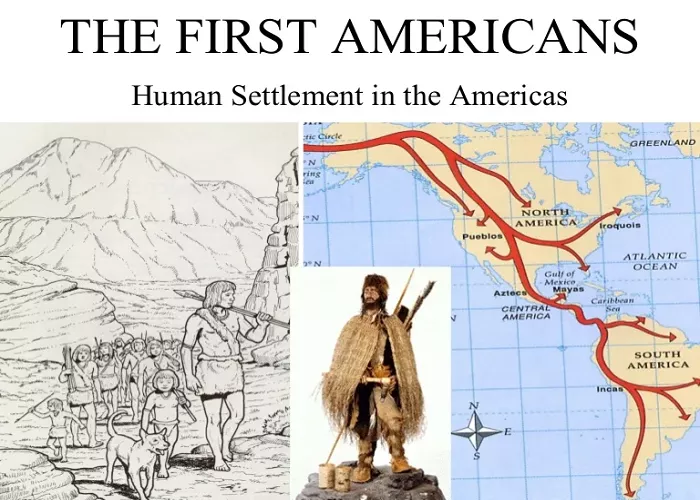Understanding the origins of the original inhabitants of the Americas involves delving into a complex tapestry of archaeological findings, genetic studies, and evolving theories. This article aims to provide a comprehensive yet accessible overview of who the original Americans were, tracing their origins, migration patterns, and the rich diversity they brought to the continent.
The term “original Americans” refers to the Indigenous peoples who first inhabited the Americas long before the arrival of Europeans. These communities, with their distinct cultures, languages, and traditions, have a history that spans thousands of years. Recent research has shed light on their origins and the paths they took to populate the vast expanse of the Americas.
Origins and Migration Theories
1. The Beringia Land Bridge Hypothesis
Traditionally, the most accepted theory suggests that the first Americans migrated from eastern Eurasia into the Americas via the Beringia land bridge. This landmass connected Siberia to Alaska and is believed to have been traversed by these early peoples between 20,000 and 15,000 years ago. Genetic studies support this theory, indicating a close relationship between Indigenous peoples of the Americas and certain Siberian populations.
2. Coastal Migration Theory
An alternative theory proposes that these early migrants traveled along the Pacific coastline, utilizing boats and following marine resources. Archaeological sites along the coast of the Americas support this idea, suggesting that coastal routes may have been a significant pathway for these populations.
3. Multiple Migration Waves
Emerging evidence points toward multiple waves of migration, with diverse groups entering the Americas at different times. This theory accounts for the vast linguistic and cultural diversity observed among Indigenous populations today.
Archaeological Evidence
The Diversity of Indigenous Cultures
By the time Europeans arrived in the late 15th century, the Americas were home to millions of Indigenous people. These groups were incredibly diverse, with unique languages, traditions, and ways of life. Let’s explore some of the major cultural regions and tribes.
1. The Northeast Woodlands
- Tribes: Iroquois (Haudenosaunee), Algonquin, and Wampanoag.
- Lifestyle: These tribes lived in forests and relied on farming, hunting, and fishing. They were known for their longhouses and the Iroquois Confederacy, a political alliance of six tribes.
2. The Southeast
- Tribes: Cherokee, Creek, Seminole, and Choctaw.
- Lifestyle: The Southeast tribes were skilled farmers, growing crops like corn, beans, and squash. They built large earthen mounds for religious and ceremonial purposes.
3. The Great Plains
- Tribes: Sioux, Cheyenne, Comanche, and Blackfoot.
- Lifestyle: These tribes were nomadic hunters, following herds of bison. They lived in teepees and were known for their horsemanship after Europeans introduced horses.
4. The Southwest
- Tribes: Navajo, Hopi, Apache, and Pueblo.
- Lifestyle: The Southwest tribes were skilled farmers and builders. The Pueblo people, for example, built intricate adobe homes and developed advanced irrigation systems.
5. The Pacific Northwest
- Tribes: Tlingit, Haida, and Chinook.
- Lifestyle: These tribes relied on fishing, especially salmon, and were known for their totem poles and large plank houses.
6. California and the Great Basin
- Tribes: Paiute, Shoshone, and Miwok.
- Lifestyle: These tribes adapted to diverse environments, from deserts to forests. They were skilled gatherers and hunters.
7. The Arctic and Subarctic
- Tribes: Inuit, Yupik, and Aleut.
- Lifestyle: These tribes lived in harsh, cold climates and relied on hunting marine mammals like seals and whales.
Pre-Clovis Sites
Sites such as Monte Verde in Chile and the Buttermilk Creek Complex in Texas have provided evidence of human occupation dating back over 15,000 years, suggesting that the peopling of the Americas occurred earlier than previously believed.
Genetic Studies
Advancements in genetic research have been instrumental in tracing the lineages of Indigenous peoples. Studies have identified specific genetic markers that link Native Americans to ancient populations in Siberia, supporting the Beringia land bridge hypothesis. Additionally, genetic diversity among Indigenous groups indicates a long period of isolation and adaptation within the Americas.
Cultural and Linguistic Diversity
The Indigenous peoples of the Americas are not a monolithic group but encompass a vast array of cultures, languages, and traditions. Estimates suggest that prior to European contact, there were over 1,000 distinct languages spoken across the continent, grouped into numerous language families. This diversity reflects the adaptation of these communities to various environments and their unique historical developments.
Conclusion
The original Americans, with their rich tapestry of cultures and histories, are the result of complex migration patterns, diverse origins, and millennia of adaptation to the American continents. Ongoing research continues to uncover new insights into their origins and histories, highlighting the importance of understanding and honoring their legacy as the first peoples of the Americas.

